Lee
Quantum Computing for Climate Resilience and Sustainability Challenges
Jul 23, 2024


Abstract:The escalating impacts of climate change and the increasing demand for sustainable development and natural resource management necessitate innovative technological solutions. Quantum computing (QC) has emerged as a promising tool with the potential to revolutionize these critical areas. This review explores the application of quantum machine learning and optimization techniques for climate change prediction and enhancing sustainable development. Traditional computational methods often fall short in handling the scale and complexity of climate models and natural resource management. Quantum advancements, however, offer significant improvements in computational efficiency and problem-solving capabilities. By synthesizing the latest research and developments, this paper highlights how QC and quantum machine learning can optimize multi-infrastructure systems towards climate neutrality. The paper also evaluates the performance of current quantum algorithms and hardware in practical applications and presents realistic cases, i.e., waste-to-energy in anaerobic digestion, disaster prevention in flooding prediction, and new material development for carbon capture. The integration of these quantum technologies promises to drive significant advancements in achieving climate resilience and sustainable development.
Classification of complex local environments in systems of particle shapes through shape-symmetry encoded data augmentation
Dec 19, 2023
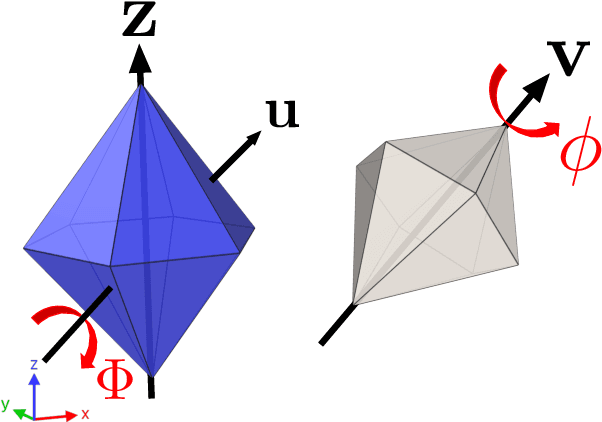
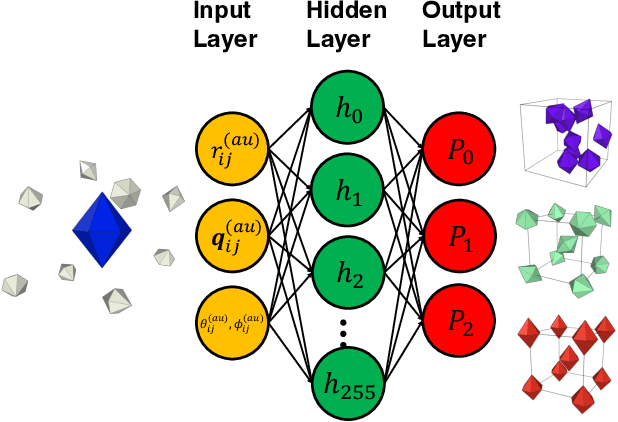
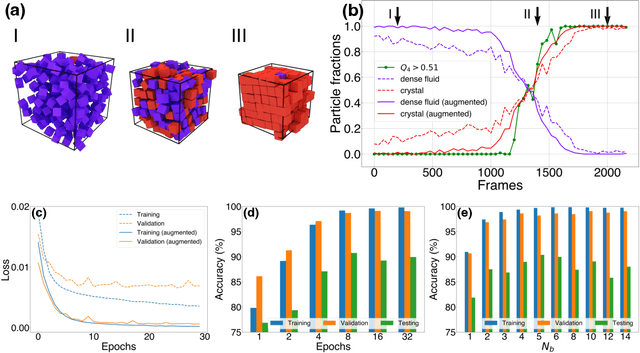
Abstract:Detecting and analyzing the local environment is crucial for investigating the dynamical processes of crystal nucleation and shape colloidal particle self-assembly. Recent developments in machine learning provide a promising avenue for better order parameters in complex systems that are challenging to study using traditional approaches. However, the application of machine learning to self-assembly on systems of particle shapes is still underexplored. To address this gap, we propose a simple, physics-agnostic, yet powerful approach that involves training a multilayer perceptron (MLP) as a local environment classifier for systems of particle shapes, using input features such as particle distances and orientations. Our MLP classifier is trained in a supervised manner with a shape symmetry-encoded data augmentation technique without the need for any conventional roto-translations invariant symmetry functions. We evaluate the performance of our classifiers on four different scenarios involving self-assembly of cubic structures, 2-dimensional and 3-dimensional patchy particle shape systems, hexagonal bipyramids with varying aspect ratios, and truncated shapes with different degrees of truncation. The proposed training process and data augmentation technique are both straightforward and flexible, enabling easy application of the classifier to other processes involving particle orientations. Our work thus presents a valuable tool for investigating self-assembly processes on systems of particle shapes, with potential applications in structure identification of any particle-based or molecular system where orientations can be defined.
"It's a Fair Game'', or Is It? Examining How Users Navigate Disclosure Risks and Benefits When Using LLM-Based Conversational Agents
Sep 20, 2023Abstract:The widespread use of Large Language Model (LLM)-based conversational agents (CAs), especially in high-stakes domains, raises many privacy concerns. Building ethical LLM-based CAs that respect user privacy requires an in-depth understanding of the privacy risks that concern users the most. However, existing research, primarily model-centered, does not provide insight into users' perspectives. To bridge this gap, we analyzed sensitive disclosures in real-world ChatGPT conversations and conducted semi-structured interviews with 19 LLM-based CA users. We found that users are constantly faced with trade-offs between privacy, utility, and convenience when using LLM-based CAs. However, users' erroneous mental models and the dark patterns in system design limited their awareness and comprehension of the privacy risks. Additionally, the human-like interactions encouraged more sensitive disclosures, which complicated users' ability to navigate the trade-offs. We discuss practical design guidelines and the needs for paradigmatic shifts to protect the privacy of LLM-based CA users.
Stochastic Assignment for Deploying Multiple Marsupial Robots
Oct 19, 2021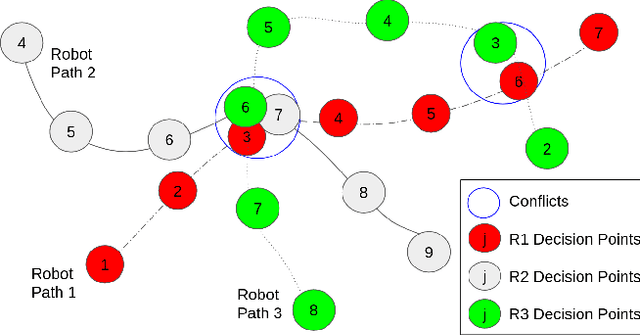
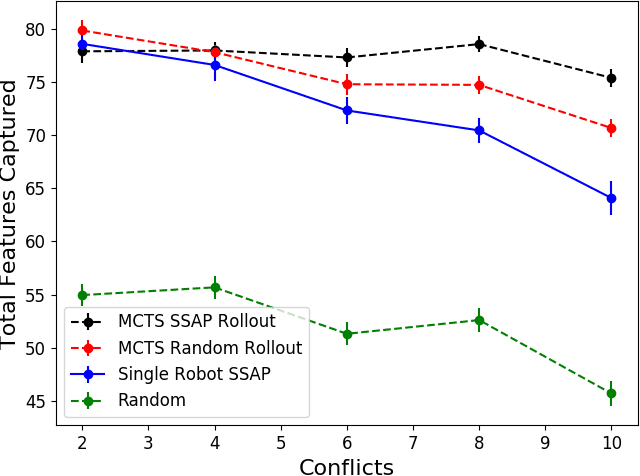
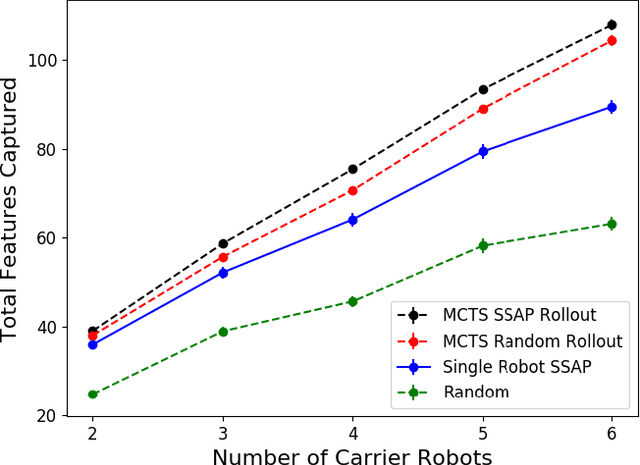
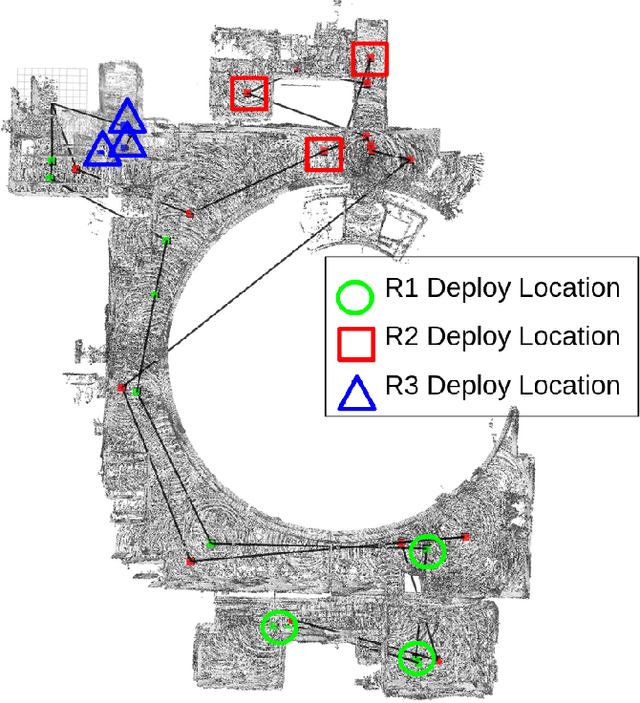
Abstract:Marsupial robot teams consist of carrier robots that transport and deploy multiple passenger robots, such as a team of ground robots that carry and deploy multiple aerial robots, to rapidly explore complex environments. We specifically address the problem of planning the deployment times and locations of the carrier robots to best meet the objectives of a mission while reasoning over uncertain future observations and rewards. While prior work proposed optimal, polynomial-time solutions to single-carrier robot systems, the multiple-carrier robot deployment problem is fundamentally harder as it requires addressing conflicts and dependencies between deployments of multiple passenger robots. We propose a centralized heuristic search algorithm for the multiple-carrier robot deployment problem that combines Monte Carlo Tree Search with a dynamic programming-based solution to the Sequential Stochastic Assignment Problem as a rollout action-selection policy. Our results with both procedurally-generated data and data drawn from the DARPA Subterranean Challenge Urban Circuit show the viability of our approach and substantial exploration performance improvements over alternative algorithms.
Optimal Sequential Stochastic Deployment of Multiple Passenger Robots
Oct 19, 2021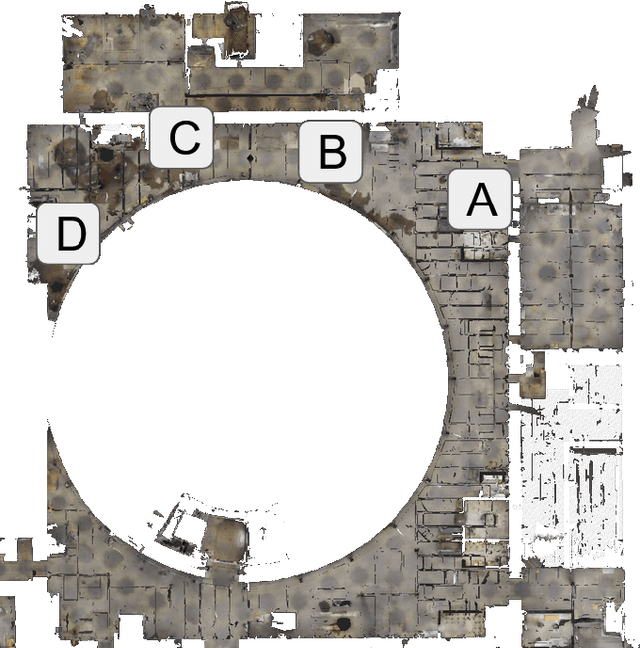
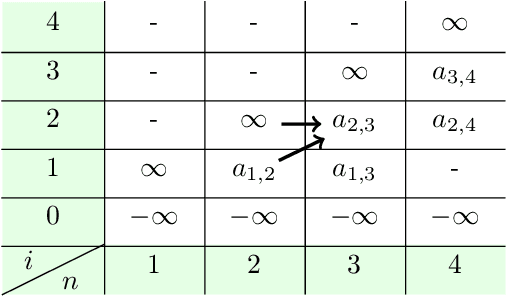
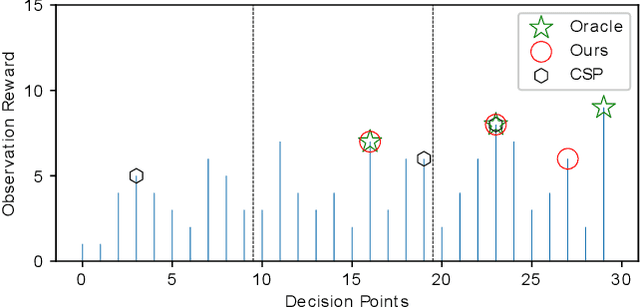
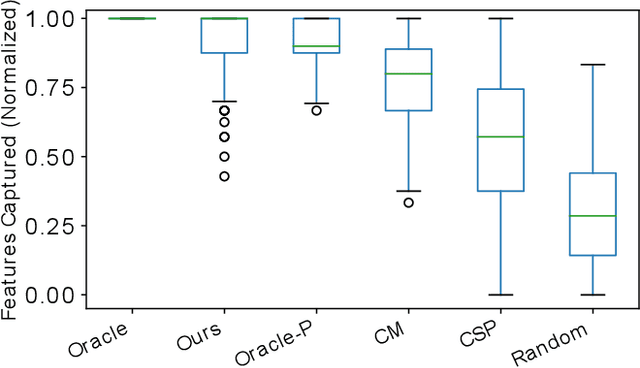
Abstract:We present a new algorithm for deploying passenger robots in marsupial robot systems. A marsupial robot system consists of a carrier robot (e.g., a ground vehicle), which is highly capable and has a long mission duration, and at least one passenger robot (e.g., a short-duration aerial vehicle) transported by the carrier. We optimize the performance of passenger robot deployment by proposing an algorithm that reasons over uncertainty by exploiting information about the prior probability distribution of features of interest in the environment. Our algorithm is formulated as a solution to a sequential stochastic assignment problem (SSAP). The key feature of the algorithm is a recurrence relationship that defines a set of observation thresholds that are used to decide when to deploy passenger robots. Our algorithm computes the optimal policy in $O(NR)$ time, where $N$ is the number of deployment decision points and $R$ is the number of passenger robots to be deployed. We conducted drone deployment exploration experiments on real-world data from the DARPA Subterranean challenge to test the SSAP algorithm. Our results show that our deployment algorithm outperforms other competing algorithms, such as the classic secretary approach and baseline partitioning methods, and is comparable to an offline oracle algorithm.
 Add to Chrome
Add to Chrome Add to Firefox
Add to Firefox Add to Edge
Add to Edge